Abstract
Three adult subjects were taught the following two-sample, two-comparison conditional discriminations (each sample is shown with its positive and negative comparison, in that order): A1-B1B2, A2-B2B1; B1-C1C2, B2-C2C1; and C1-D1D2, C2-D2D1. A teaching procedure was designed to encourage control by negative comparisons. Subjects were then tested for emergent performances that would indicate whether the baseline conditional discriminations were reflexive, symmetric, and transitive. The tests documented the emergence of two classes of equivalent stimuli: A1, B2, C1, D2 and A2, B1, C2, D1. These were the classes to be expected if the negative comparisons were the controlling comparisons in the baseline conditional discriminations. The negative comparisons, however, were not the comparisons that subjects were recorded as having chosen in the baseline conditional discriminations. Differential test results confirmed predictions arising from a stimulus-control analysis: In reflexivity tests (AA, BB, CC, DD), subjects chose comparisons that differed from the sample; one-node transitivity (AC, BD) and “equivalence” (CA, DB) tests also yielded results that were the opposite of those to be expected from control by positive comparisons; symmetry tests (BA, CB, DC), two-node transitivity (AD) tests, and two-node “equivalence” (DA) tests yielded results that were to be expected from control by either positive or negative comparisons.
Keywords: equivalence relations, conditional discrimination, negative stimuli, stimulus control, computer touch screen input, adult humans
Full text
PDF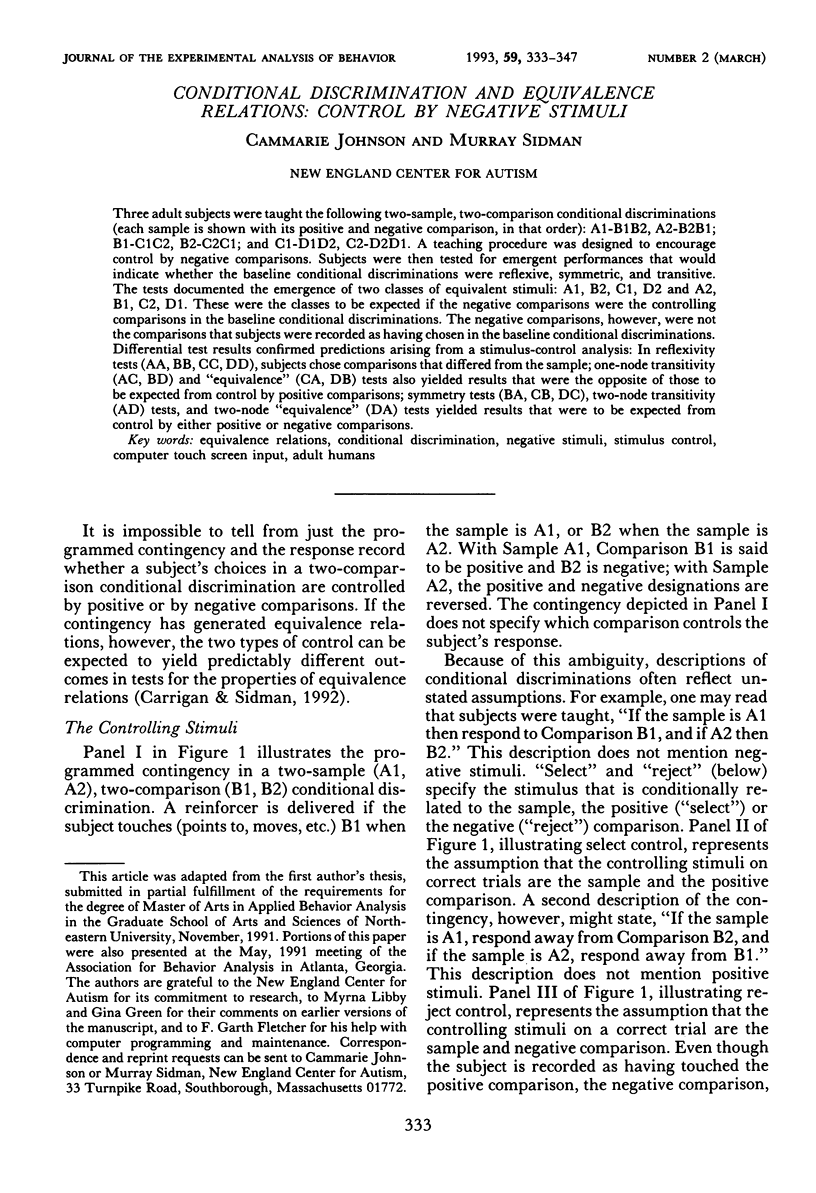
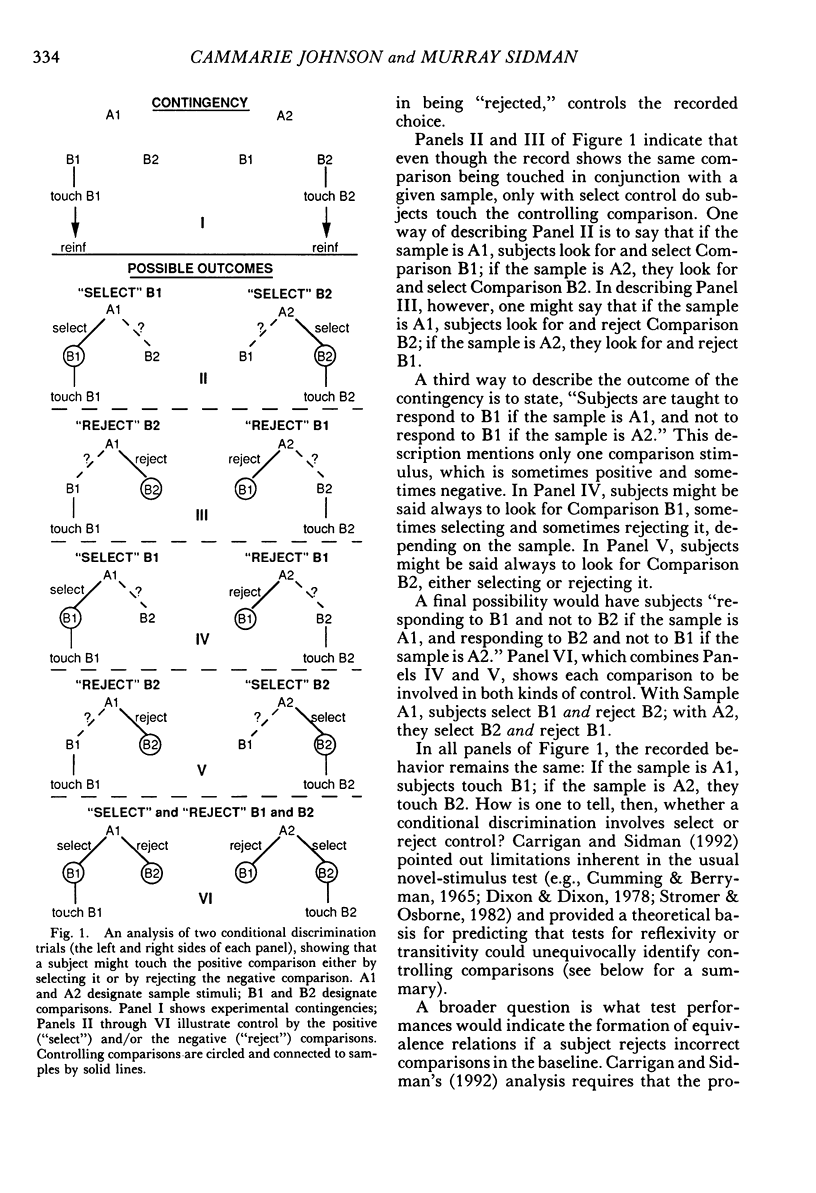
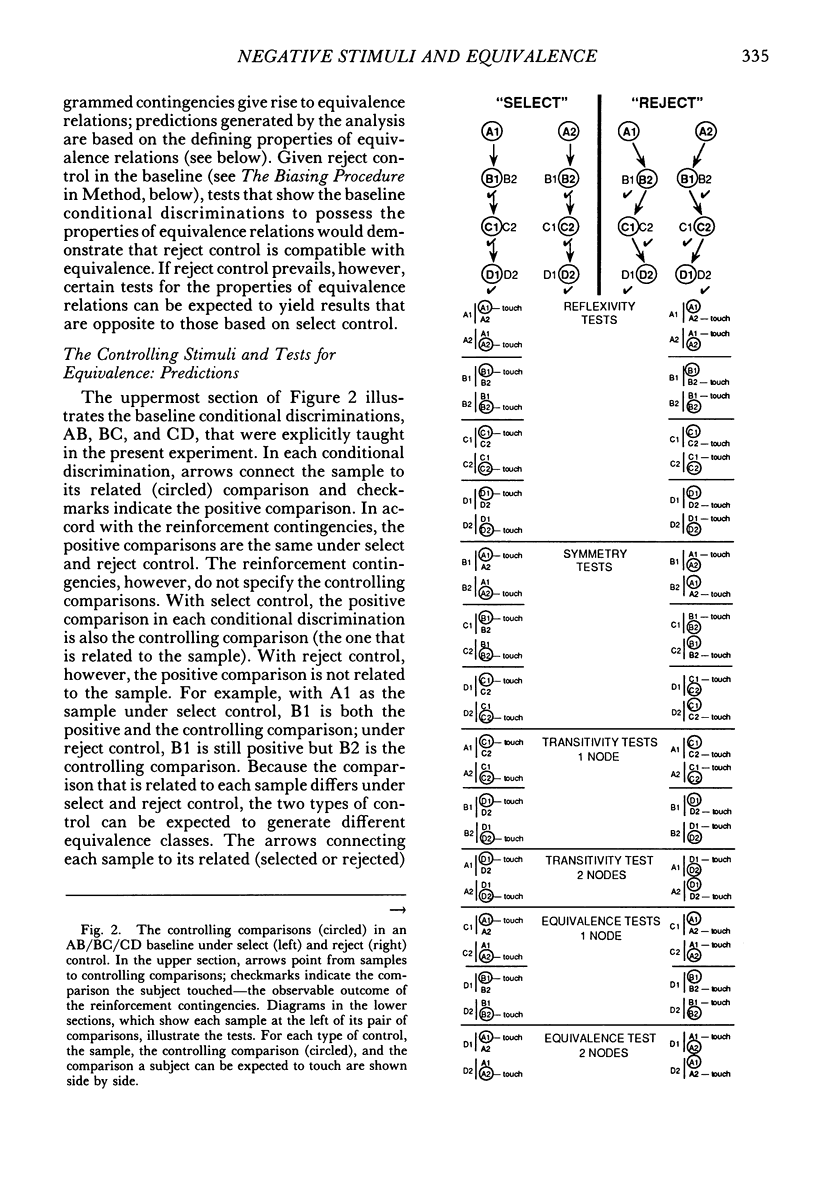
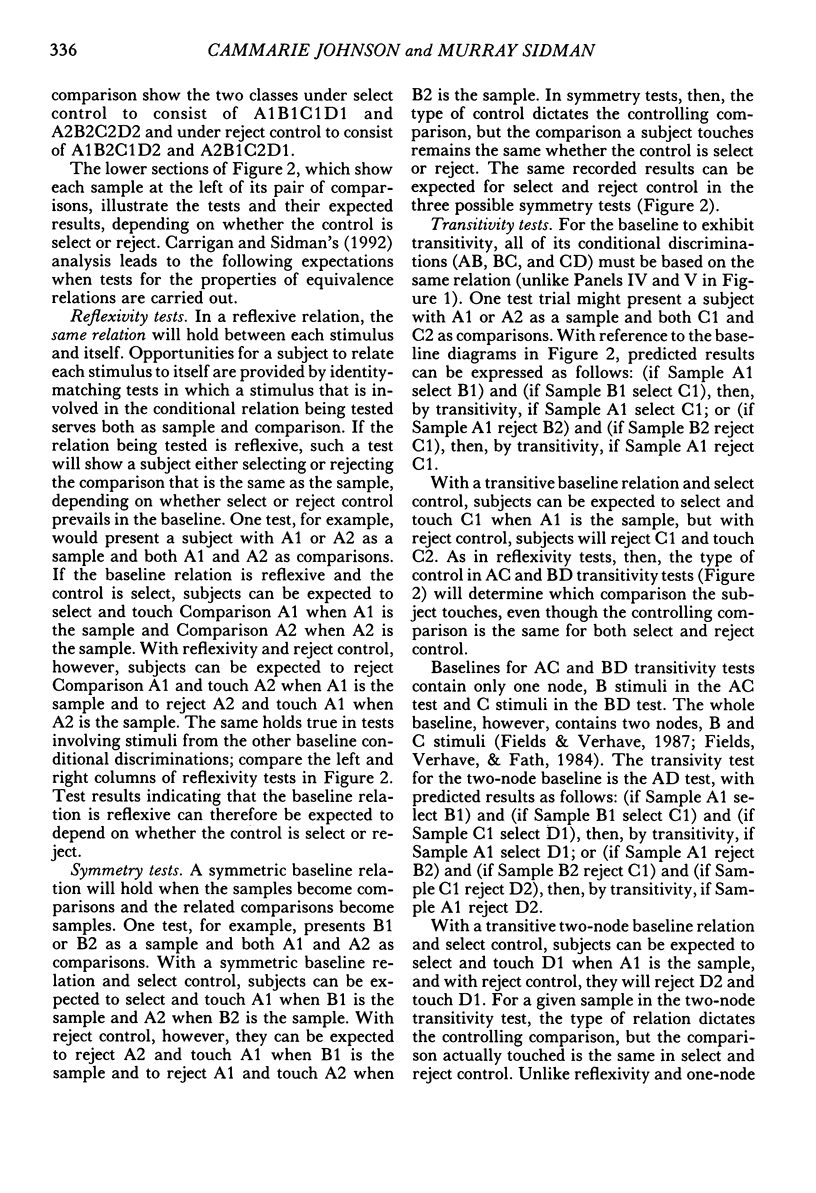
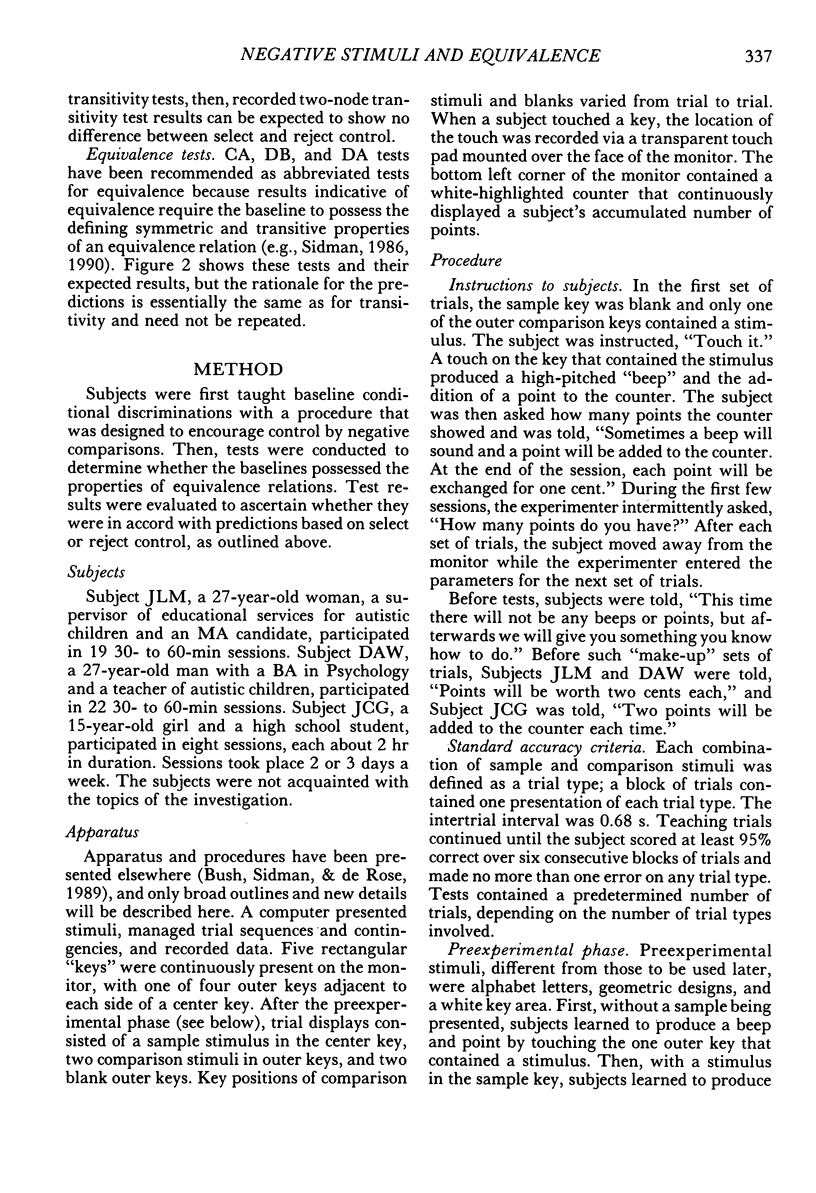
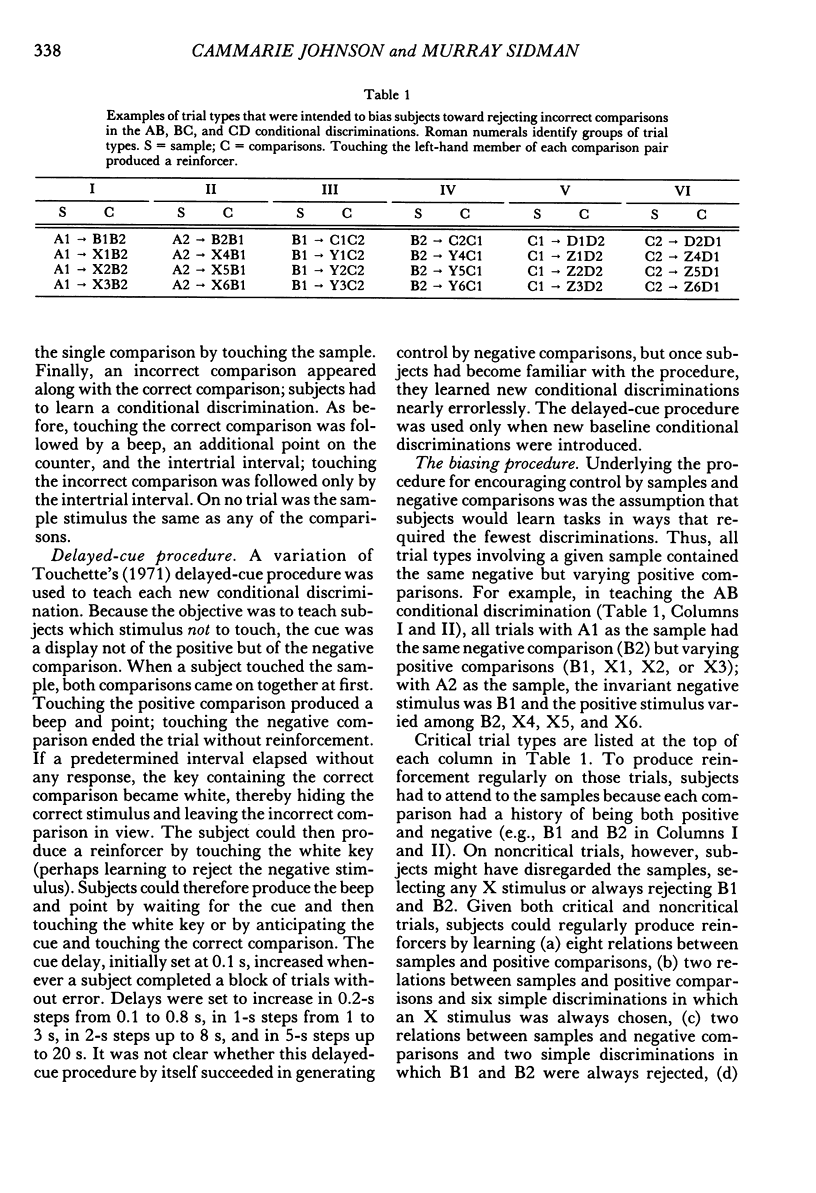

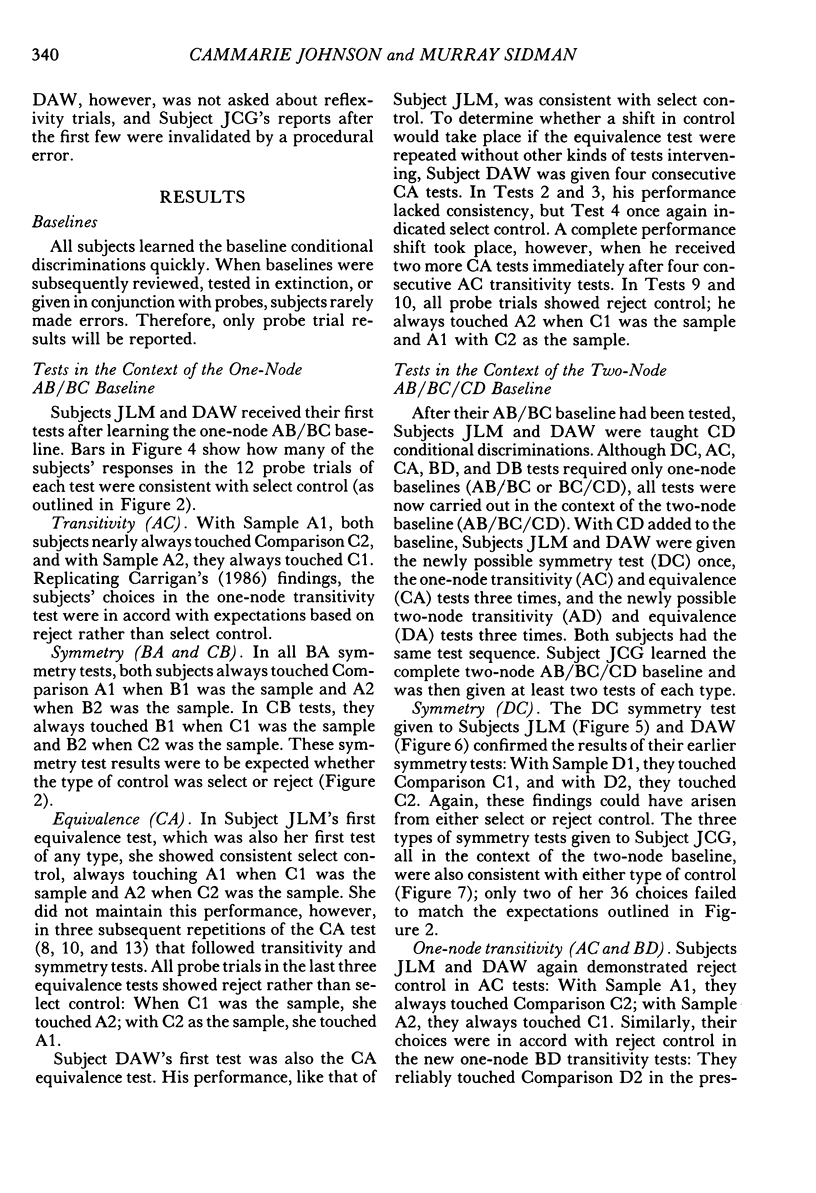
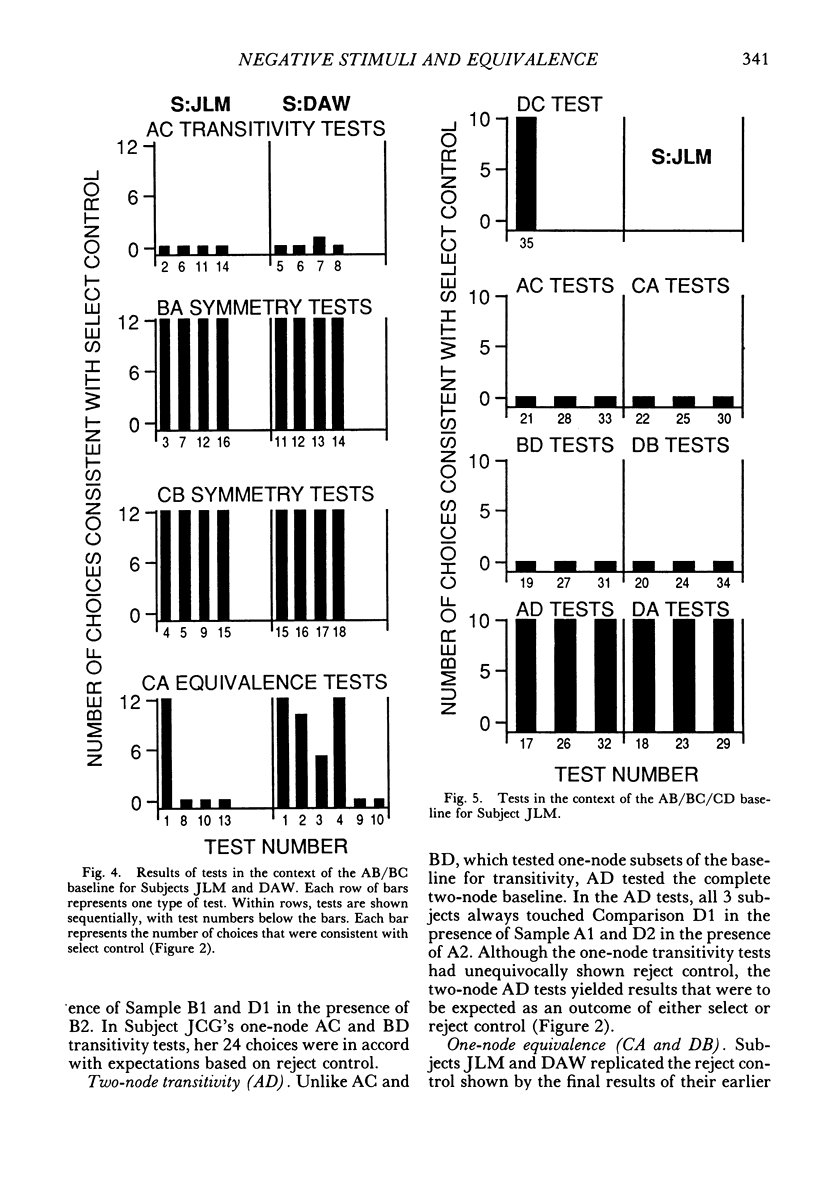
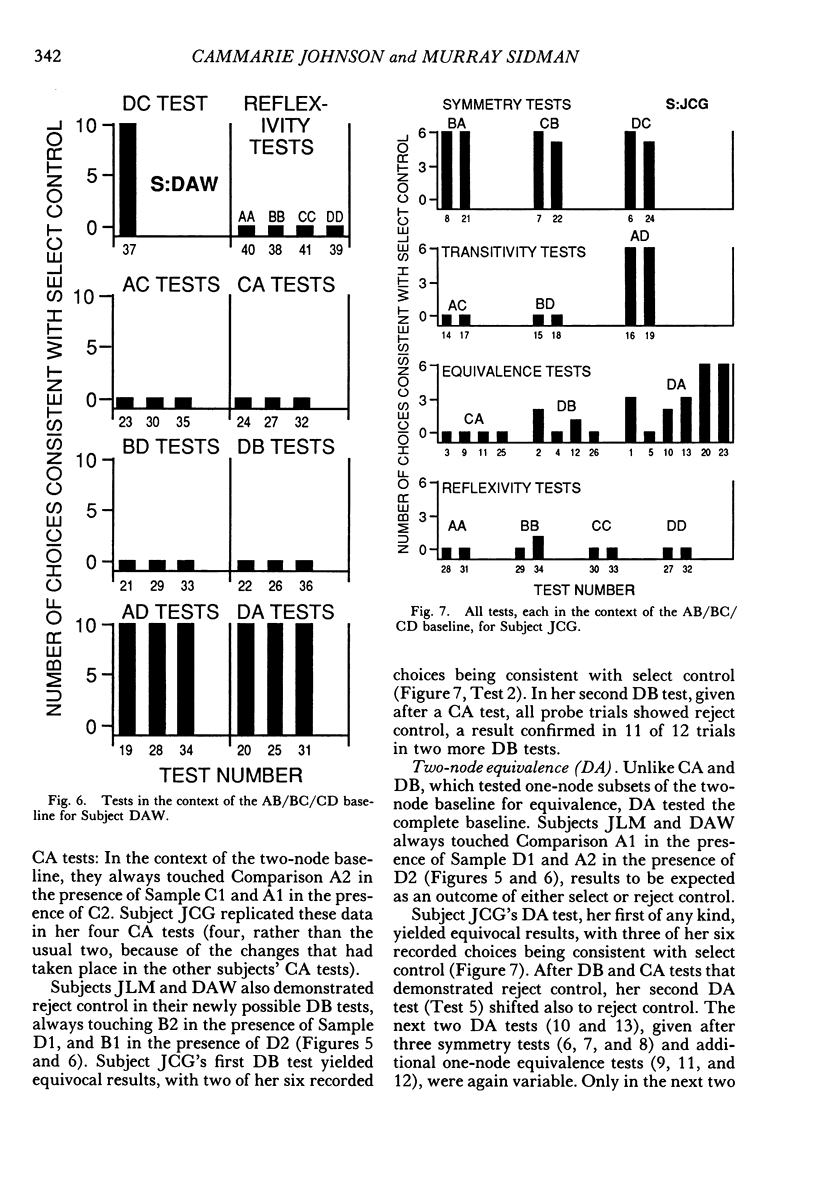
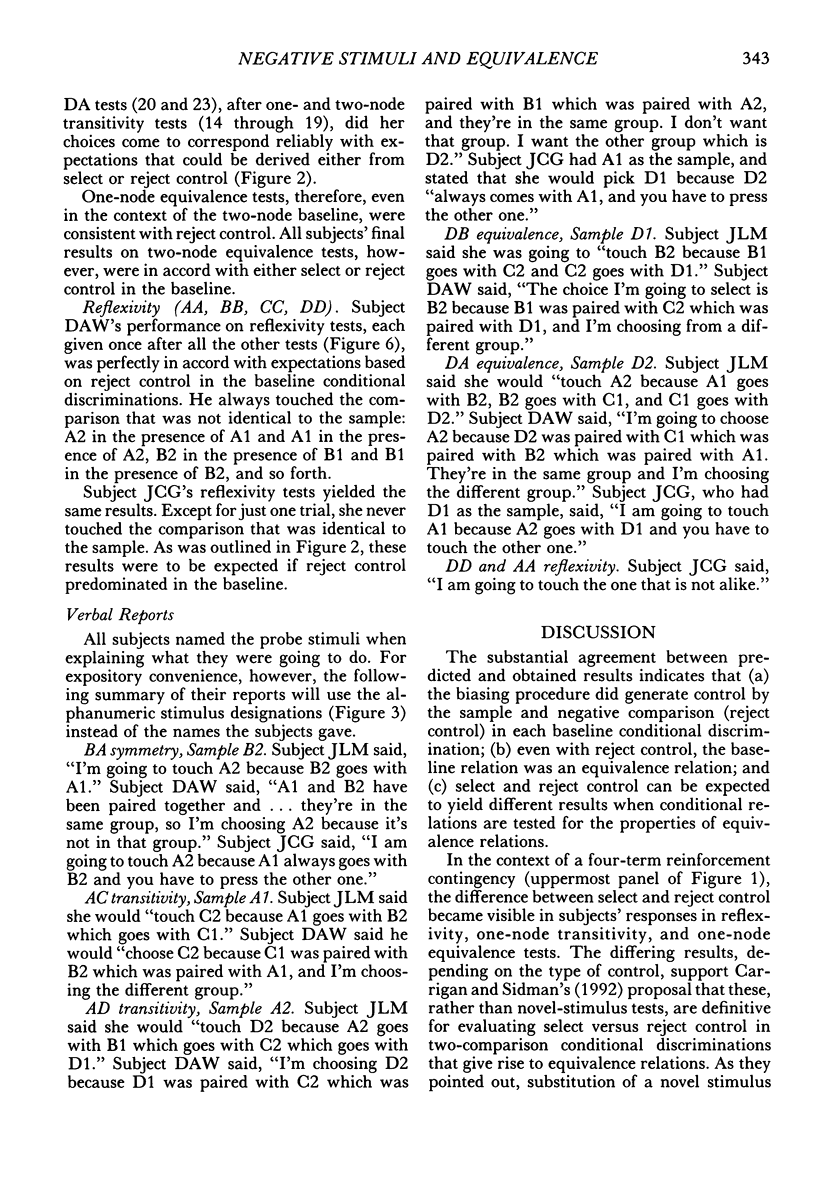
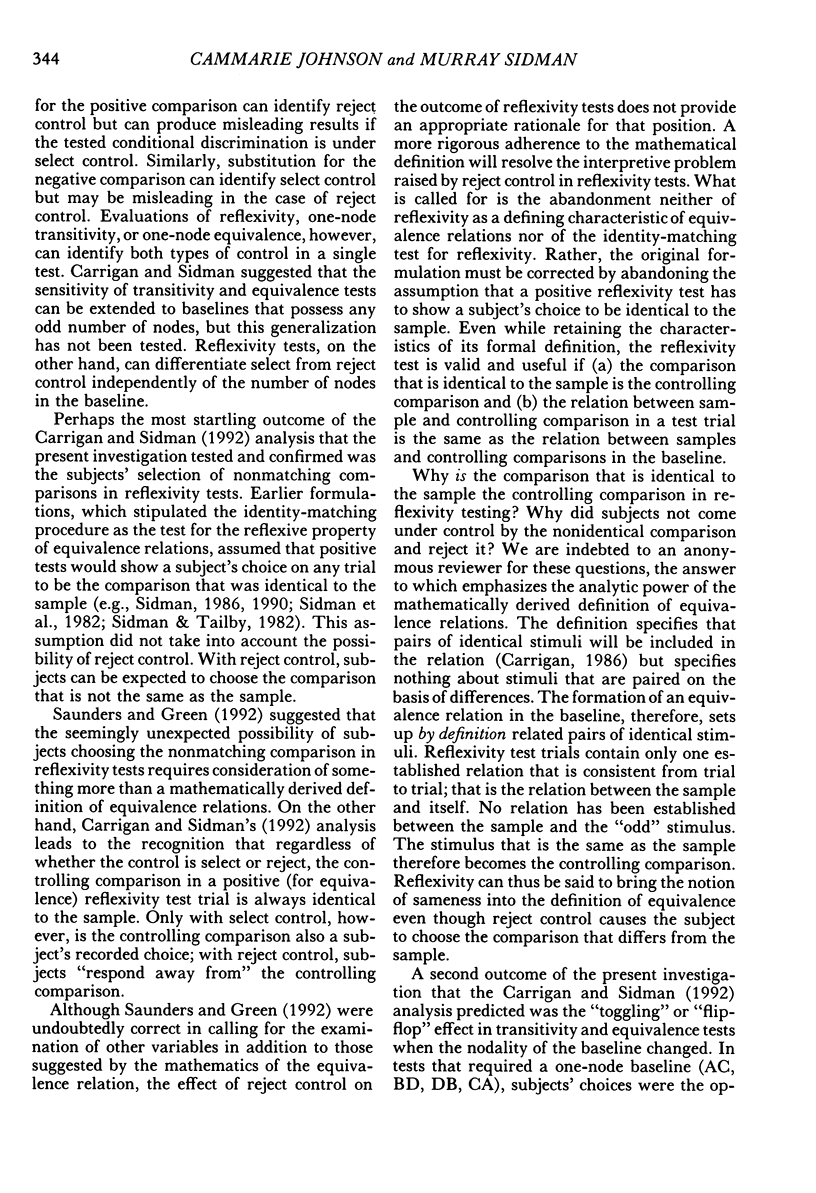
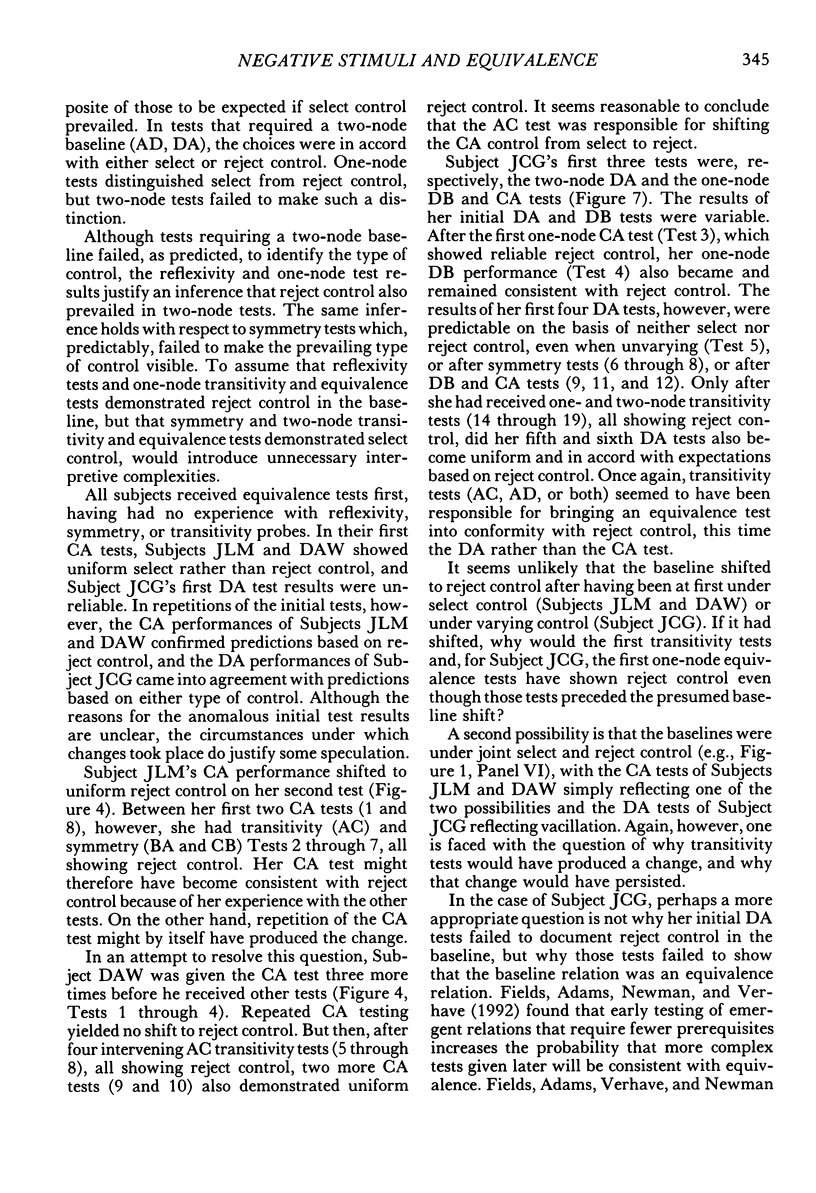
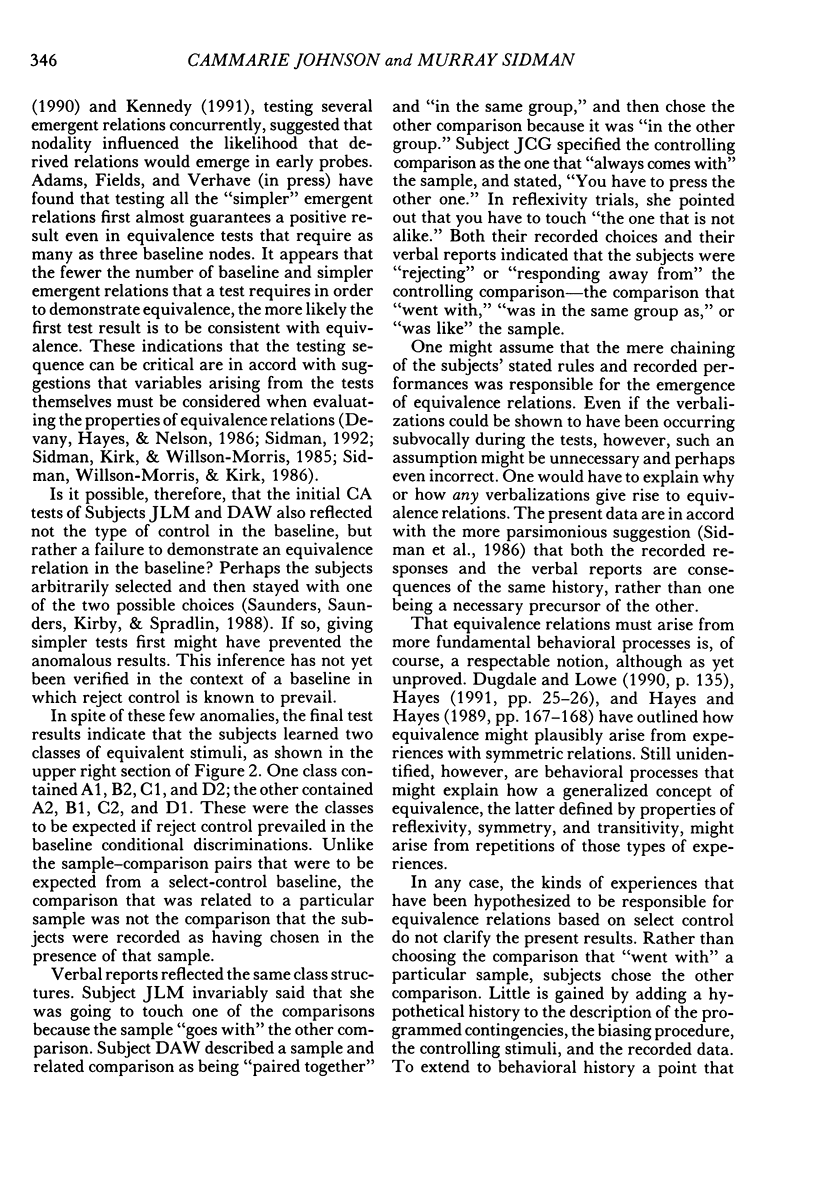
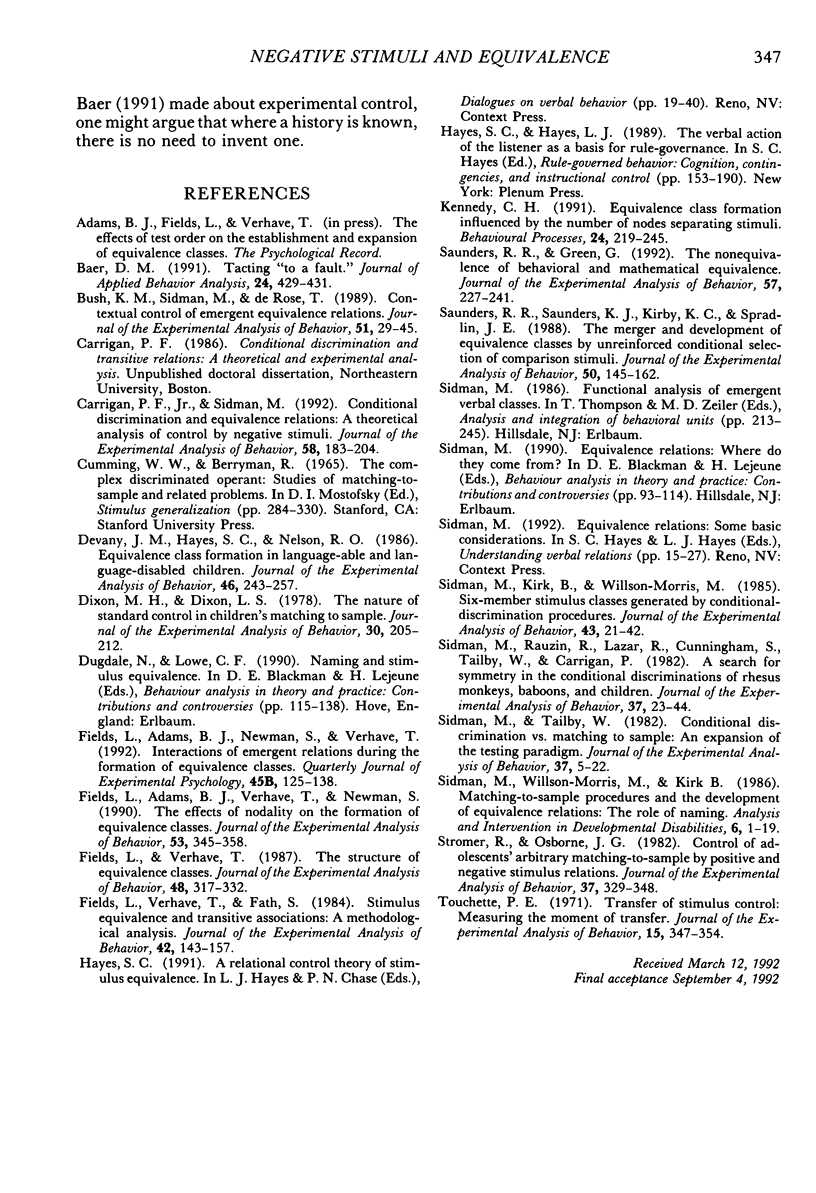
Selected References
These references are in PubMed. This may not be the complete list of references from this article.
- Baer D. M. Tacting "to a fault". J Appl Behav Anal. 1991 Fall;24(3):429–431. doi: 10.1901/jaba.1991.24-429. [DOI] [PMC free article] [PubMed] [Google Scholar]
- Bush K. M., Sidman M., de Rose T. Contextual control of emergent equivalence relations. J Exp Anal Behav. 1989 Jan;51(1):29–45. doi: 10.1901/jeab.1989.51-29. [DOI] [PMC free article] [PubMed] [Google Scholar]
- Carrigan P. F., Sidman M. Conditional discrimination and equivalence relations: A theoretical analysis of control by negative stimuli. J Exp Anal Behav. 1992 Jul;58(1):183–204. doi: 10.1901/jeab.1992.58-183. [DOI] [PMC free article] [PubMed] [Google Scholar]
- Devany J. M., Hayes S. C., Nelson R. O. Equivalence class formation in language-able and language-disabled children. J Exp Anal Behav. 1986 Nov;46(3):243–257. doi: 10.1901/jeab.1986.46-243. [DOI] [PMC free article] [PubMed] [Google Scholar]
- Dixon M. H., Dixon L. S. The nature of standard control in children's matching-to-sample. J Exp Anal Behav. 1978 Sep;30(2):205–212. doi: 10.1901/jeab.1978.30-205. [DOI] [PMC free article] [PubMed] [Google Scholar]
- Fields L., Adams B. J., Newman S., Verhave T. Interactions among emergent relations during equivalence class formation. Q J Exp Psychol B. 1992 Aug;45(2):125–138. doi: 10.1080/14640749208401013. [DOI] [PubMed] [Google Scholar]
- Fields L., Adams B. J., Verhave T., Newman S. The effects of nodality on the formation of equivalence classes. J Exp Anal Behav. 1990 May;53(3):345–358. doi: 10.1901/jeab.1990.53-345. [DOI] [PMC free article] [PubMed] [Google Scholar]
- Fields L., Verhave T., Fath S. Stimulus equivalence and transitive associations: A methodological analysis. J Exp Anal Behav. 1984 Jul;42(1):143–157. doi: 10.1901/jeab.1984.42-143. [DOI] [PMC free article] [PubMed] [Google Scholar]
- Fields L., Verhave T. The structure of equivalence classes. J Exp Anal Behav. 1987 Sep;48(2):317–332. doi: 10.1901/jeab.1987.48-317. [DOI] [PMC free article] [PubMed] [Google Scholar]
- Saunders R. R., Green G. The nonequivalence of behavioral and mathematical equivalence. J Exp Anal Behav. 1992 Mar;57(2):227–241. doi: 10.1901/jeab.1992.57-227. [DOI] [PMC free article] [PubMed] [Google Scholar]
- Saunders R. R., Saunders K. J., Kirby K. C., Spradlin J. E. The merger and development of equivalence classes by unreinforced conditional selection of comparison stimuli. J Exp Anal Behav. 1988 Sep;50(2):145–162. doi: 10.1901/jeab.1988.50-145. [DOI] [PMC free article] [PubMed] [Google Scholar]
- Sidman M., Kirk B., Willson-Morris M. Six-member stimulus classes generated by conditional-discrimination procedures. J Exp Anal Behav. 1985 Jan;43(1):21–42. doi: 10.1901/jeab.1985.43-21. [DOI] [PMC free article] [PubMed] [Google Scholar]
- Sidman M., Rauzin R., Lazar R., Cunningham S., Tailby W., Carrigan P. A search for symmetry in the conditional discriminations of rhesus monkeys, baboons, and children. J Exp Anal Behav. 1982 Jan;37(1):23–44. doi: 10.1901/jeab.1982.37-23. [DOI] [PMC free article] [PubMed] [Google Scholar]
- Sidman M., Tailby W. Conditional discrimination vs. matching to sample: an expansion of the testing paradigm. J Exp Anal Behav. 1982 Jan;37(1):5–22. doi: 10.1901/jeab.1982.37-5. [DOI] [PMC free article] [PubMed] [Google Scholar]
- Stromer R., Osborne J. G. Control of adolescents' arbitrary matching-to-sample by positive and negative stimulus relations. J Exp Anal Behav. 1982 May;37(3):329–348. doi: 10.1901/jeab.1982.37-329. [DOI] [PMC free article] [PubMed] [Google Scholar]
- Touchette P. E. Transfer of stimulus control: measuring the moment of transfer. J Exp Anal Behav. 1971 May;15(3):347–354. doi: 10.1901/jeab.1971.15-347. [DOI] [PMC free article] [PubMed] [Google Scholar]


